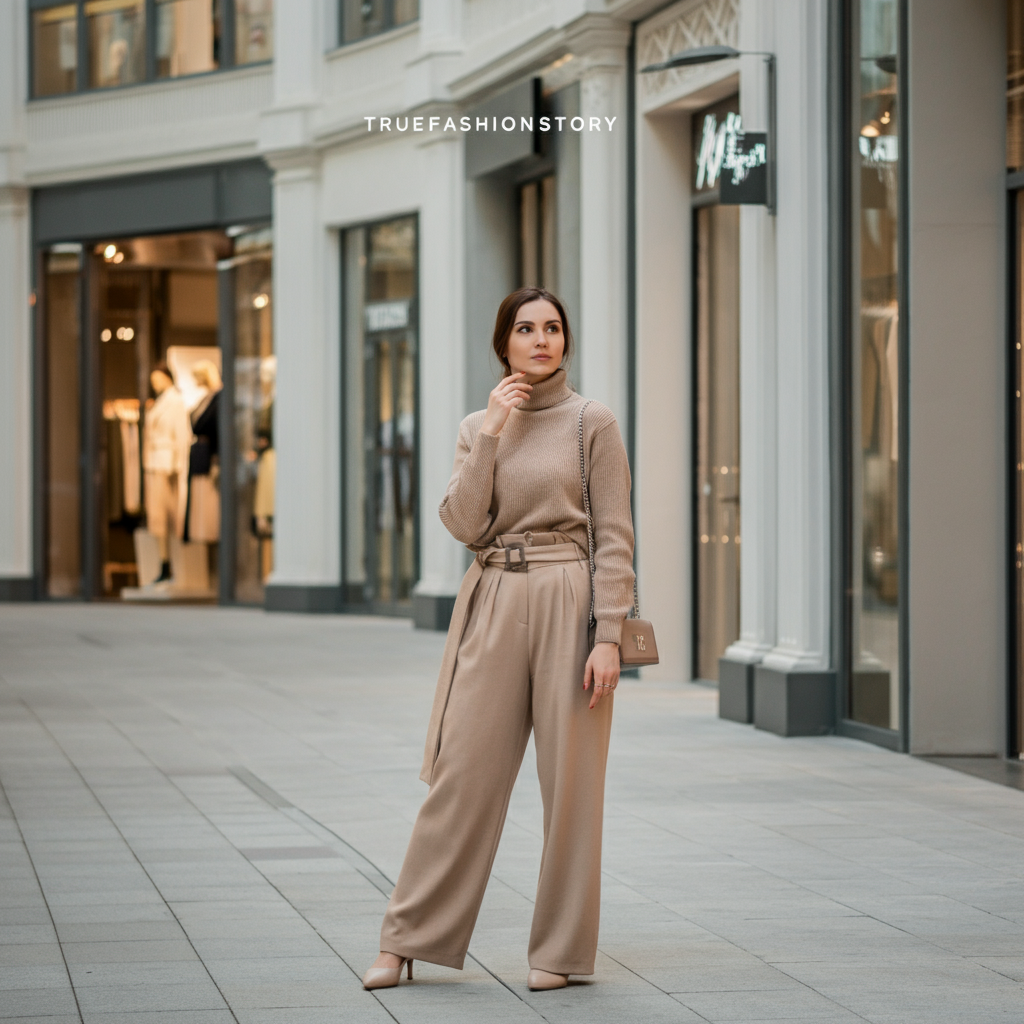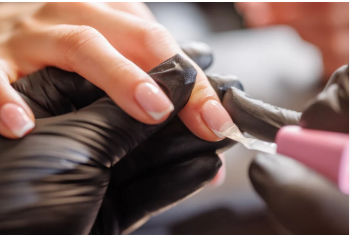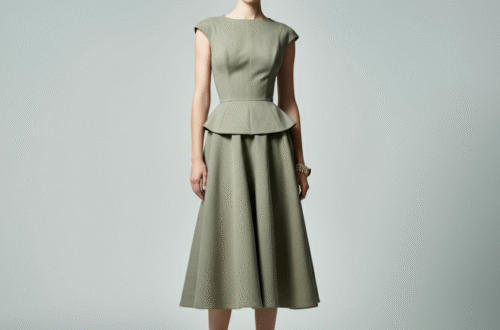Aritzia is a brand many people love for its stylish, minimalist pieces that feel like a step up from typical mall stores. But as we become more aware of our shopping habits, a big question comes up: Is Aritzia fast fashion? The answer isn’t a simple yes or no.
The brand sits in a confusing middle ground. It’s more expensive and generally higher quality than obvious fast fashion giants like SHEIN or H&M, but it also releases new items frequently and follows trends. In this article, we’ll explore Aritzia’s business model, production practices, and sustainability efforts to help you decide if it aligns with your values.
Key Takeaways
- Aritzia is often considered “mid-range” or “slow-fast fashion” rather than a classic fast fashion brand due to its higher prices and better material quality.
- The brand produces a large volume of styles and introduces new collections frequently, which are characteristics of a fast fashion model.
- While Aritzia has made some commitments to sustainability, like using more eco-friendly materials and setting climate targets, critics argue these efforts aren’t happening fast enough.
- The brand has faced criticism regarding its labor practices and supply chain transparency.
- Ultimately, whether you consider Aritzia to be fast fashion depends on your personal definition and ethical standards.
What Exactly Is Fast Fashion?
Before we can label Aritzia, it’s important to understand what “fast fashion” really means. Fast fashion is a business model built on speed and low cost. It involves quickly turning runway trends into affordable clothes for the mass market.
Key characteristics of fast fashion include:
- Rapid Production Cycles: Brands release thousands of new styles every week, encouraging constant consumption.
- Low Prices: Clothing is extremely cheap, making it feel disposable.
- Trendy Designs: The focus is on copying the latest high-fashion looks, which go out of style just as quickly as they came in.
- Poor Quality: Garments are often made from cheap, synthetic materials like polyester and are not designed to last more than a few wears.
- Ethical Concerns: To keep costs down, many fast fashion brands rely on underpaid labor in factories with poor working conditions.
Aritzia’s Business Model: Where It Fits In
Aritzia operates differently from brands like Zara or Forever 21. It focuses on creating “Everyday Luxury,” with timeless designs and higher-quality materials. Let’s break down its model to see where it aligns with and differs from fast fashion.
The Argument Against Aritzia Being Fast Fashion
Many shoppers defend Aritzia, pointing out several key differences.
Higher Price Point and Perceived Quality
You won’t find $10 dresses at Aritzia. The prices are significantly higher, reflecting better materials like merino wool, silk, and responsibly sourced cotton. For example, their famous Super Puff jacket is made with 100% responsibly sourced goose down. This focus on quality means the clothes are designed to last longer than a single season, which is the opposite of the fast fashion mindset. Many shoppers find that their Aritzia pieces stay in their closets for years.
Focus on “Timeless” Staples
While Aritzia does follow trends, its core collections are built around classic, versatile pieces. Think well-cut trousers, simple bodysuits, and classic coats. These items don’t go out of style quickly. This encourages customers to build a lasting wardrobe rather than constantly chasing micro-trends. This approach to long-lasting style is a core principle you can read more about on blogs like truefashionstory.comBlog.
The Argument For Aritzia Being Fast Fashion
On the other hand, several aspects of Aritzia’s business model raise red flags for conscious consumers.
High Volume of New Arrivals
One of the biggest arguments for classifying is Aritzia fast fashion is the sheer volume of new products it releases. The company constantly drops new collections and colorways, creating a sense of urgency and encouraging frequent shopping. Their website’s “New Arrivals” section is always full, which mirrors the fast fashion strategy of keeping customers coming back for more.
Trend-Driven Collections
Despite its focus on basics, Aritzia is very much a trend-driven brand. It quickly picks up on what’s popular on social media and in high fashion, releasing its own versions. From cargo pants to corset tops, Aritzia capitalizes on fleeting styles. This rapid adoption of trends is a classic fast fashion tactic designed to drive sales.
Sustainability and Ethics at Aritzia
A brand’s ethical and environmental record is a huge part of the fast fashion debate. So, how does Aritzia stack up?
Aritzia’s Environmental Initiatives
Aritzia has publicly stated its commitment to sustainability. The company has taken steps to reduce its environmental impact, which are outlined in its annual ESG (Environmental, Social, and Governance) reports.
Here are some of their reported efforts:
- Materials: Aritzia is increasing its use of more sustainable materials, such as TENCEL™ Lyocell, recycled polyester, and organic cotton.
- Climate Goals: The company has set science-based targets to reduce its greenhouse gas emissions in its operations and supply chain.
- Packaging: They have committed to using 100% recycled and certified materials for their paper packaging.
However, critics argue that these goals are not ambitious enough and that the brand’s overall growth and high production volume cancel out some of these positive steps.
Supply Chain and Labor Practices
This is where Aritzia faces its most significant criticism. Like many large apparel companies, Aritzia does not own its factories. It works with suppliers around the world. While the company has a Supplier Code of Conduct, ensuring it’s enforced across hundreds of factories is a major challenge.
Lack of Transparency
Aritzia has been criticized for its lack of transparency. The brand does not publish a full list of its factory suppliers, making it difficult for third-party watchdogs to verify working conditions and wages. This lack of openness is a common issue in the fashion industry and a major concern for those who want to support ethical brands.
Labor Rights Concerns
In the past, reports have surfaced about potential labor rights issues within Aritzia’s supply chain. While the company states it audits its suppliers, without full transparency, consumers are left to trust the brand’s internal reports. Ethical fashion advocates argue that true commitment requires more than just words; it requires verifiable proof.
Aritzia vs. Fast Fashion vs. Slow Fashion
To better understand Aritzia’s place in the fashion landscape, let’s compare it to clear examples of fast and slow fashion.
|
Feature |
Aritzia |
Fast Fashion (e.g., SHEIN) |
Slow Fashion (e.g., Patagonia) |
|---|---|---|---|
|
Price |
Mid-to-High |
Very Low |
High |
|
Quality |
Good to Excellent |
Low to Poor |
Excellent, Built to Last |
|
Production Speed |
Fast, frequent drops |
Extremely Fast, daily drops |
Slow, seasonal drops |
|
Style Focus |
Trendy Staples |
Micro-trends |
Timeless, Functional |
|
Transparency |
Limited |
Very Low |
High, publishes suppliers |
|
Sustainability |
Some initiatives |
Minimal to None |
Core to the business model |
As the table shows, Aritzia doesn’t fit neatly into one box. It combines elements from both sides, making it a “grey area” brand.
So, What’s the Final Verdict?
After looking at the evidence, it’s clear why the question is Aritzia fast fashion is so debated.
Aritzia is best described as a hybrid or mid-range brand. It’s not fast fashion in the traditional sense of being cheap and disposable. The quality and price point set it apart. However, its high production volume, trend-chasing behavior, and lack of supply chain transparency align it with some of fast fashion’s most problematic aspects.
Many people call brands like Aritzia “fast fashion premium” or “slow-fast fashion.” They offer a higher quality product but still operate on a model that encourages overconsumption. For a deeper look into identifying brands that truly prioritize ethical production, you can explore resources like truefashionstory.comBlog.
Ultimately, whether you choose to shop at Aritzia depends on your personal criteria for ethical and sustainable fashion. If your main goal is to avoid poorly made, disposable clothing, Aritzia might be an acceptable choice. If your priority is supporting brands with transparent supply chains and a strong commitment to environmental and labor ethics, you might want to look elsewhere.
FAQs
1. Is Aritzia better than SHEIN or Zara?
Yes, in terms of quality and durability, Aritzia is generally considered better than classic fast fashion brands like SHEIN and Zara. Its clothes are made with better materials and are designed to last longer. However, it shares the issue of high production volume and trend-chasing with brands like Zara.
2. Does Aritzia use sweatshops?
Aritzia has a Supplier Code of Conduct that prohibits forced labor and unsafe working conditions. However, due to its lack of transparency about its factories, it’s difficult for independent organizations to verify these claims. This lack of transparency is a significant concern for ethical fashion advocates.
3. What are some ethical alternatives to Aritzia?
If you love Aritzia’s style but want to support more ethical and sustainable brands, consider looking at brands like Reformation (which has a similar aesthetic with more transparency), Everlane, or smaller independent labels focused on slow fashion. Thrifting and buying secondhand is also a great sustainable alternative.
4. How can I be a more conscious shopper?
Being a conscious shopper involves asking questions. Before buying, consider: Do I really need this? How many times will I wear it? What is it made of? Look for brands that are transparent about their supply chain and use sustainable materials. Buying less and choosing high-quality, timeless pieces is the most sustainable approach.





